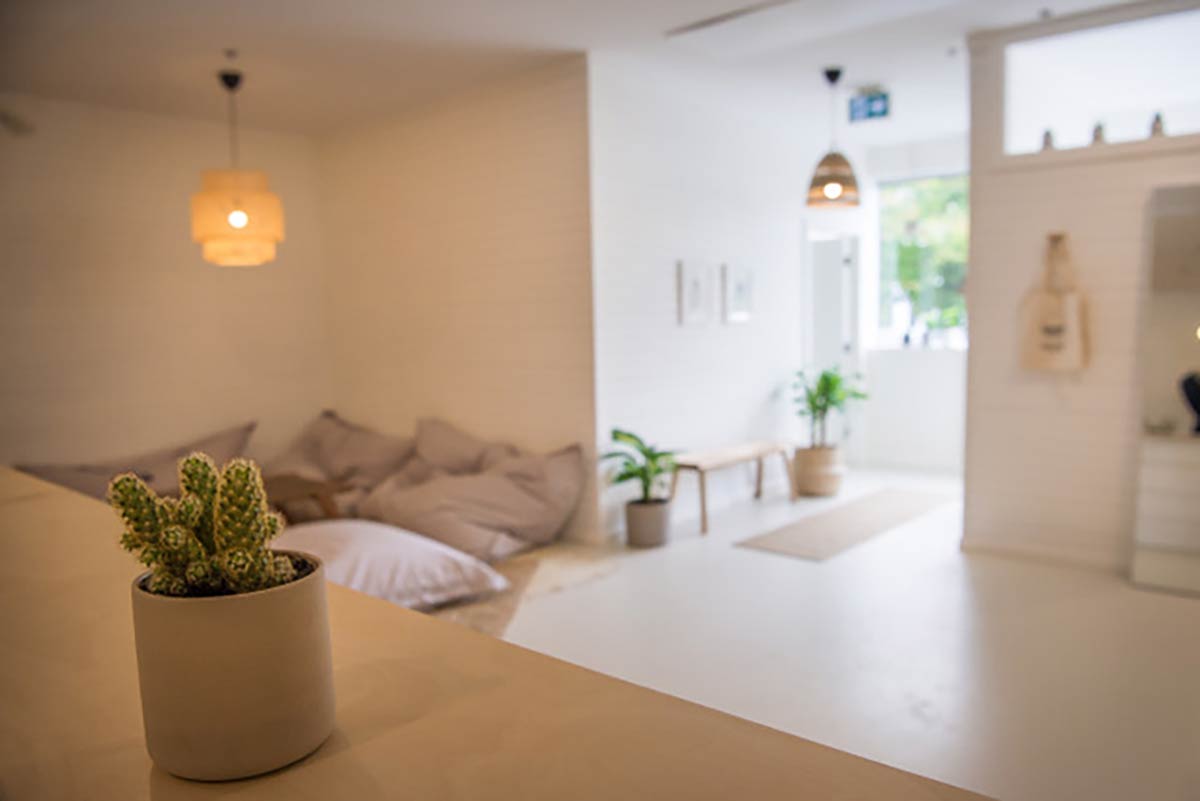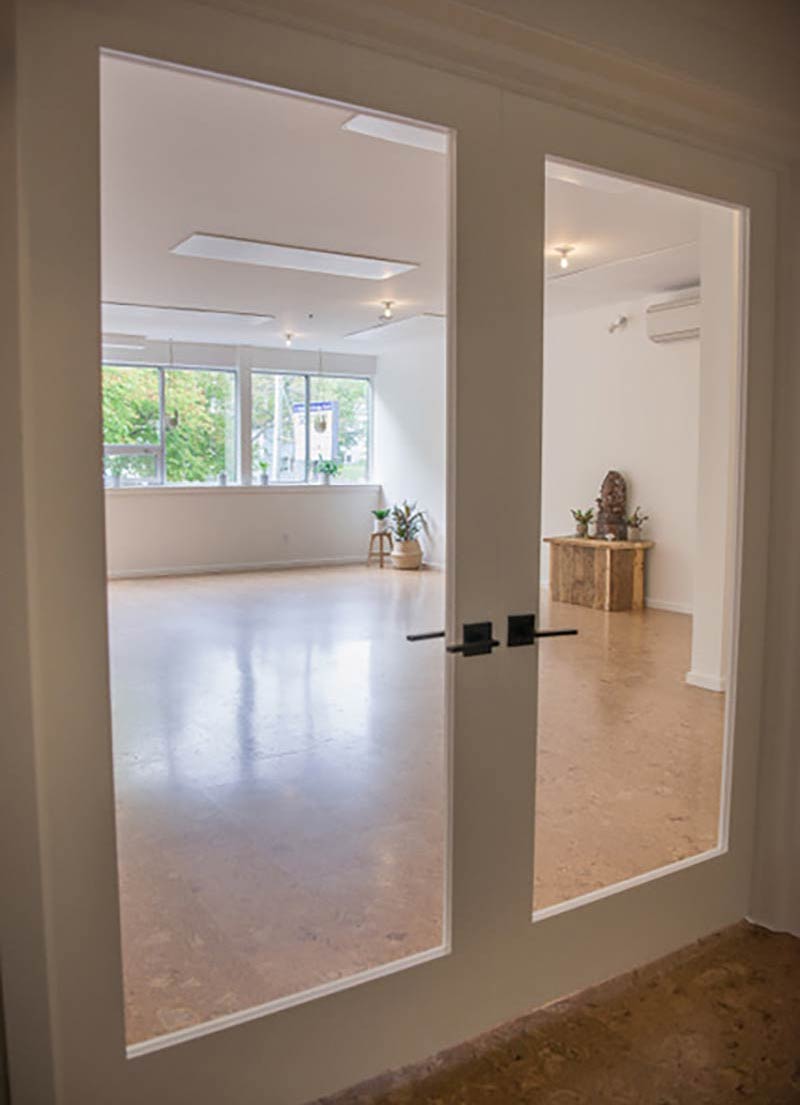The Practice
The foundation of Ashtanga Yoga is known as trishtana which refer to Breath, Asana (postures) and Dristi (gazing point)
The relationship between each breath and movement is known as Vinyasa. The purpose of Vinyasa is internal cleansing.
Ashtanga Yoga can be practiced by anyone. Each student is considered individually and is taught at a suitable pace for them. The classical way of teaching is known as “Mysore Style”.
The structure of the asana practice always begins with Surya Namaskara (sun salutations) and ends with Padmasana ( Lotus) and rest. Gradually the student learn the asanas (postures) that go in between to make up the series. It is taught in a linear fashion, as each asana builds on the previous one, and prepares the body for the next.
Learning yoga in this traditional manner benefits the student in many ways. Through this method the student gains independence and self reliance in their own sadhana (spiritual practice). The practice is a means to come to know your true self, while creating a cleansed, strong physical body and a calm, steady mind.
Guru-Shishya Parampara
Refers to the succession of knowledge passed from teacher to student in its most valuable form, based on direct experience. This ancient knowledge has been passed down through thousands of years through direct lineages. The teacher and student develop a relationship built on trust. The teachings should be presented with a good heart, with a good purpose and with noble intentions.
Ashtanga Yoga is an ancient system of yoga that has been passed on through such a lineage. The Yoga Kurunta is the text that is referred to as one of the earliest written sources. It was imparted to Sri T. Krishnamacharya in the early 1900’s by his Guru Rama Mohan Brahmachari, and was later passed down to Shri K Pattabhi Jois and then to his grandson R. Sharath Jois of Mysore, India where Ashtanga Yoga continues to be taught to this day.
CLASS DESCRIPTIONS
Mysore- All Levels
Ashtanga Yoga is traditionally taught in what is known as “Mysore” practice, named affectionately after the city in India from where it originates, and it is how the practice is taught and learned there.
Mysore can be described as an independent practice where the asanas are taught, one at a time, in a set sequence so that the student can build their practice slowly and commit the sequence to memory. Students advance at their own rate, irregardless of the other students in the room. Although it is self practice, the teacher is there to give support and guidance as needed.
Full Led Primary Series
Entire Primary Series of Ashtanga Yoga
Shala Guidelines
Doors open 10 minutes before class start time
Be prepared to sweat. Please bring a Mysore rug or micro-fibre towel, and hand towel. A selection of yoga mats, Mysore rugs and towels are also available for purchase at the Shala
Please do not wear scented products to class
Practice on an empty stomach. Please allow several hours after eating before practicing.
Drink plenty of water after practice, but not during. Through the breath and movement system, our aim is to generate an internal heat and a detoxifying sweat. Water interferes with this process and is saved for after the practice.
The Mysore practice room is a mostly quiet, breath-filled, self-reflective space, and as such, is a cell phone free zone. No apple watches or cellphones are permitted.
Please leave all belongings in the change room.
Please refrain from talking in the Mysore room, and please enter and leave quietly. Please ensure that when electronics are left in change rooms, that they are switched off.
If you happen to arrive during the opening chant, please wait until it is finished to enter the room.
Led Classes start on time. Please arrive 5- 10 mins before the class. The door will be locked promptly at the start of the class.
In the Led Primary series class we learn the correct vinyasa count in sanskrit. All Mysore students are encouraged to attend. Please stop where you usually stop in Mysore practice and join back in the class at backbends.
CANCELLATION AND NO SHOW POLICY
- 1 HOUR CANCELLATION Policy: You may cancel your pre-registered space in class online up to 1 hour before the start of class.
- LATE CANCELLATION FEE : Unlimited pass holders that cancel their pre-registered space less than 1 hour before the start of class will automatically be charged a $10 late cancellation fee to their payment card on file immediately at the time of the late cancellation.
- NO SHOW: Unlimited pass holders that do not show up for their pre-registered space in the class will automatically be charged a $10 no-show fee to their payment card on file.
- CLASS CARD or DROP IN CLASS: Class card or single class drop-in will automatically be forfeited if you cancel within 1 hour before the start of class or do not show up to attend.
- WORKSHOP: 24 hours notice of cancellation for workshops. With 24 hours notice, you will receive credit on your account for the value of that workshop/class. With less than 24 hours notice or no-show, no credit is given and you forfeit the fee for the workshop/class. No refunds, no exceptions.
SHALA



Moon Days
August 16th – full
August 30th – new
September
September 14th – full
September 29th – new
October
October 14th – full
October 28th – new
November
November 12th – full
November 26th – new
Both full and new moon days are observed as yoga holidays in the Ashtanga Yoga tradition. What is the reasoning behind this?
Like all things of a watery nature (human beings are about 70% water), we are affected by the phases of the moon. The phases of the moon are determined by the moon’s relative position to the sun. Full moons occur when they are in opposition and new moons when they are in conjunction. Both sun and moon exert a gravitational pull on the earth. Their relative positions create different energetic experiences that can be compared to the breath cycle. The full moon energy corresponds to the end of inhalation when the force of prana is greatest. This is an expansive, upward moving force that makes us feel energetic and emotional, but not well grounded. The Upanishads state that the main prana lives in the head. During the full moon we tend to be more headstrong.
The new moon energy corresponds to the end of exhalation when the force of apana is greatest. Apana is a contracting, downward moving force that makes us feel calm and grounded, but dense and disinclined towards physical exertion.
The Farmers Almanac recommends planting seeds at the new moon when the rooting force is strongest and transplanting at the full moon when the flowering force is strongest. Practicing Ashtanga Yoga over time makes us more attuned to natural cycles. Observing moon days is one way to recognize and honor the rhythms of nature so we can live in greater harmony with it.
Info provide by: ashtangayogacenter.com
